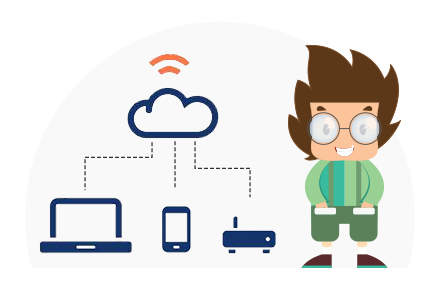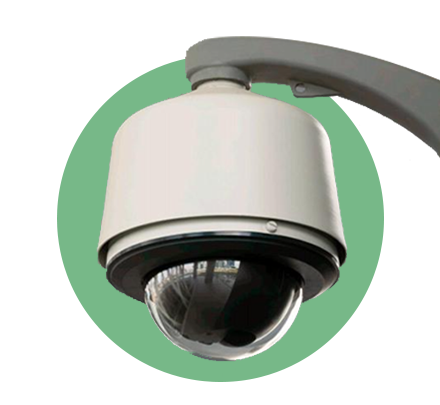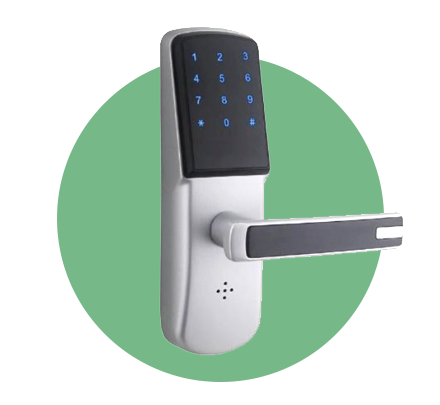How IoT for Small Businesses Can be More Efficient
Small Business
LAST UPDATE: NOV 19, 2022
10 minutes reading
lo
Whether you run a small or medium-sized firm, you will need to comprehend the Internet of Things (IoT for small business) sooner rather than later. It’s one of the hottest issues in business today. Like most issues, the concept may appear extremely complex and hazy, but when you break it down into a few basic components, it becomes clearer.
What is the Internet of Things loT?
In General, IoT’s main objective is to link all of the world’s physical locations and objects to the internet. Doing this will assist businesses of all sizes in streamlining their operations, boosting productivity, and even paving the way for brand-new goods, services, and business strategies.
How does the Internet of Things loT work?
Three broad categories can be used to group those “Things” connecting to the internet:
- Things that collect and send information
- Things that receive and act on information
- Things that do both
Collect And Send
Things like sensor equipment that can detect temperature, motion, light, air quality, moisture, or other environmental factors can be found in this category.
These kinds of sensors could provide information on refrigerator temperatures in a commercial kitchen, motion sensors in a fleet operation, or even moisture levels in a storage area where the connected devices need to be within a specific humidity range.
Receive And Act
The receive-and-act Things, which are typically incorporated into a monitoring and analytics system that notifies designated humans that a specific action needs to be taken, receive data from the collect-and-send sensors.
For example, in the commercial kitchen, if the refrigerator’s collect-and-send sensor detects a temperature issue, the receive-and-act sensor would alert the designated person to the situation. This enables the person who received the alert to take rapid action, even if they are not in the kitchen, to assist minimize losses and guarantee adherence to any applicable local food safety regulations.
Collect, Send, Receive and Act
A more extensive type of IoT for small businesses is used by things that both gather data and take action on it, enabling the system to adjust itself correctly and reduce human interaction. An agricultural operation with sensors that gather data on soil moisture and, when necessary, automatically turn on the irrigation system can serve as an example.
Even further, a system like this might get weather forecast data, in which case it would “know” that even though the soil moisture isn’t optimal, it won’t be essential to irrigate right away because rain is on the way.
IoT for Small Business: How Can It Help?
Businesses can be transformed by the IoT (Internet of Things) by automating tasks like inventory management, robotics, and automation, which can save time and money. Using the IoT for Small businesses has its advantages, including improved operational efficiency and lower expenses.
To automate processes, comprehend customer behavior, and monitor inventories, equipment, and other systems for optimal efficiency and cost reductions, large firms are embracing the IoT to aid them. This gives them a competitive advantage. The issue is whether SMEs (small and medium-sized firms) can use these technologies to some extent match huge corporations.
You can gain insight with our past blog about Small business Click Here.
How Can Small Businesses Adopt and Use the IoT?
To be competitive, small firms must utilize this technology. They would be able to automate tiresome, time-consuming operations and engage clients more successfully through individualized interactions. There are various ways small firms might leverage IoT technologies profitably. Utilizing a virtual assistant like Google Assistant would be one simple adoption.
By warning a small manufacturer about equipment faults before they happen and minimizing production downtime, adding sensors to industrial equipment can save time.
Utilizing IoT for small business devices like Nest to track temperature, lights, and when equipment is on could result in significant energy cost savings.
Small merchants, eateries, or wholesalers, for instance, might increase efficiency significantly by putting Radio-frequency identification tags on products to track inventory. This might significantly cut down on the amount of time spent scanning goods as they enter or leave the warehouse while also improving inventory accuracy. Each item needs to be scanned separately when using conventional barcode technology. In contrast, when the carton they are in passes through the scanner, thousands of RFID-embedded goods can be read at once.
What Is the Impact of IoT on Business?
IoT is a well-known phrase that you hear frequently, particularly when discussing the newest technological advances. However, when discussing IoT, it becomes abundantly clear that few individuals are aware of its importance and effects on enterprises and the global economy.
Due to the prevalence of wearable technology, such as fitness trackers, where one in two people wears them, this impact is more noticeable in the consumer market. But because IoT gadgets have already become vital parts of our lives, we risk missing a significant impact on our everyday activities, places of employment, and way of life.
But what function does IoT already play in business, and how exactly will it affect organizations in the future? We’ll look at some of the ways that IoT is influencing the present environment:
Remote Work
There is no doubt that the COVID-19 epidemic has fundamentally altered how people do their job duties, and these changes are likely to persist even after the public health emergency has passed.
People who use remote and hybrid work techniques are more and more reliant on IoT technology to keep in touch with their co-workers and carry out everyday duties. It can offer workers rapid, effective solutions without forcing them to go to a physical place or office, which can be very inconvenient for people who work from home.
IoT offers conferencing facilities and other useful tools to let employees stay connected wherever they are in the world, which can also help streamline remote work operations.
Data Tracking
Although acquiring and frequently monitoring data is an essential part of corporate operations, it may be time-consuming. IoT solutions have become more important to many enterprises as a means of facilitating more effective data collection.
For instance, Businesses can use IoT sensors to monitor client behavior while they are shopping, giving them insight into their patterns and allowing them to make decisions based on busy periods and the types of purchases that customers are making. Retailers in particular can benefit greatly from the data collected through these methods.
Inventory management can benefit greatly from IoT data tracking as it streamlines the supply chain through the use of GPS and RFID chips.
Customer Service
Customers are the lifeblood of the corporate world in many ways. No business can succeed without the support and buy-in of its customers. IoT has revolutionized the way that superior customer care is delivered. Customers now have access to a variety of useful tools to assist them in making purchases and interacting with businesses thanks to IoT services and technologies.
When customer support staff is not accessible, businesses can still respond to client questions using chatbots and AI-powered gadgets. Additionally, a live agent can get these chats for analysis to enhance the entire support process.
Increased Efficiency
It may or may not come as a surprise that businesses anticipate deploying IoT technology and related digital services would result in efficiency benefits of 12% over the next five years. It is obvious that the Internet of Things (IoT) has profoundly transformed how people conduct business, and it is likely that in the future, more businesses from a wider range of industries will be integrating IoT into their business processes.
Collaboration is one of the key ways IoT promotes efficiency growth. IoT harnesses gadgets and links them so that users, even those who are spread out across the globe, can easily communicate. There are many ways for workers to share resources and ideas thanks to cloud-hosted applications and connected devices.
What Are The 3 Most Common IoT Security Devices?
IoT gadgets can be split into two groups: local gadgets that need a network connection for some of their tasks and cloud-connected gadgets that need an internet connection to operate at all. Without internet connectivity, a smart TV, for instance, will still display cable or antenna signals, but connecting it to the internet gives you access to streaming services like Netflix.
- Security camera
- Smart locks
- Printers
1. Security Camera
Security teams can monitor all access points to a location without stationing 24-hour guards at each location thanks to security cameras, including video doorbells.
But if your video feed isn’t protected, hackers might grab it, tamper with it, use it for something else, and post it online. Additionally, if they take over the feed, they can move the camera so they can see the security codes being entered into smart locks, endangering your offices.
2. Smart Locks
These devices which are frequently combined with smart security cameras, smart alarms, and video doorbells are intended to increase security by enabling businesses to regulate access to their actual workplaces. They are frequently used by small businesses to take the position of a full-time front desk agent. The chance of missing keys ending up in the wrong hands is eliminated because users must enter a code or swipe an identification card.
3. Printers
Although printers are not IoT devices in the strictest sense, many security experts classify them as such because they frequently use IoT applications when connected to the network.
To profit from the features of smart devices while preventing threat actors from accessing your data, your IoT security system must be secured. This is difficult because, if a gadget connects to the internet so that you may access information, you can bet that someone is actively trying to obtain your information via that device on the internet.
How IoT Can Transform Businesses in the Future?
Nearly every element of our life creates data, which is captured, shared, and tracked to give us fresh perspectives, increase efficiency, and enable businesses to make wise decisions. Now, corporate leaders are starting to recognize the value of the Internet of Things in their organizations. Healthcare, energy, automotive, manufacturing, agriculture, and other sectors are using IoT, which has a wide range of applications including air track, doorbell cameras, security systems, thermostats, and many more.
Accessing More Data
Any business that wants to stay in the market and survive must have access to data. A company’s ability to engage with customers increases with the amount of data it has. The latest IoT technology that connects numerous gadgets is designed to collect more data than ever before to give users precise services.
A company that is IoT-ready can monitor and record customer behavior IoT trends and then develop the next marketing or advertising campaign that successfully targets specific demographics at a qualitative level.
IoT-Enabled Inventory Management Process
A corporation may simply track the inventory of its products from the manufacturing plant to its warehouse to deliveries with the aid of IoT-enabled remote scanners. IoT can also be used to automate inventory management, relieving a business of any human oversight that frequently results in errors. Therefore, IoT encompasses more than simply “smart homes” and “smart appliances”; it also includes “smart offices”, “smart warehouses”, “smart goods transportation”, and more.
Efficiency And Productivity
The process doesn’t finish with super-fast execution. High levels of productivity and efficiency are also necessary for today’s firms to perform their tasks. The Internet of Things may undoubtedly speed up many corporate operations without sacrificing productivity or efficiency. New technological advancements enable employees to execute challenging tasks quickly and error-free.
Continuous Customer Engagement
When products become intelligent, customers are given the option to wirelessly interact with and control them utilizing network connections and the Internet. Additionally, these communication capacities can be used to keep an eye on items and offer proactive support.
The Bottom Line
Industries will undoubtedly create their productivity-boosting, cost-cutting applications for the technology as it advances and is further adopted. There is no need to wait, though. Even the most demanding IoT use case can be handled by today’s networks thanks to the introduction of powerful 5G and LoRa (Long Range) networks.






Recent Comments